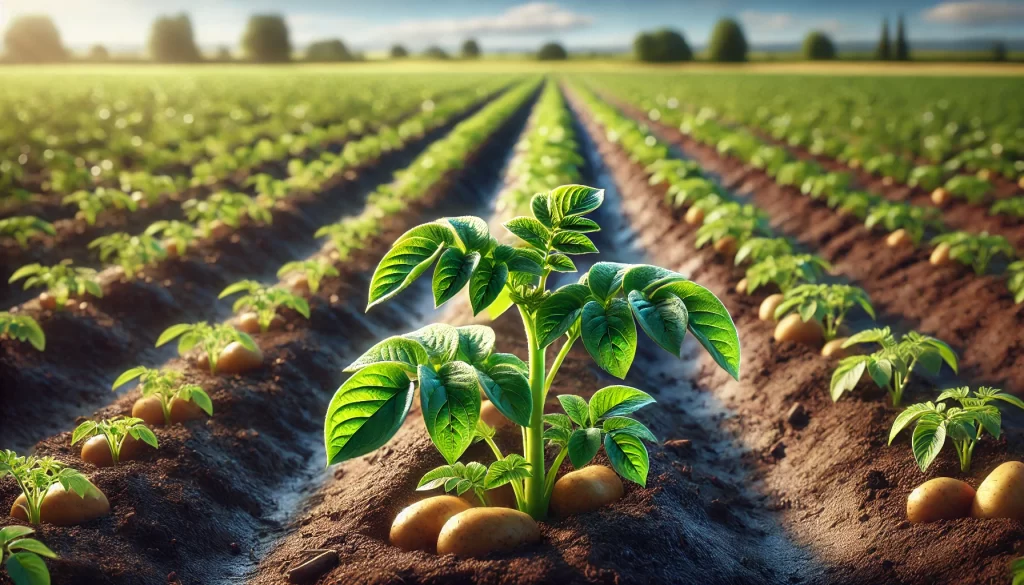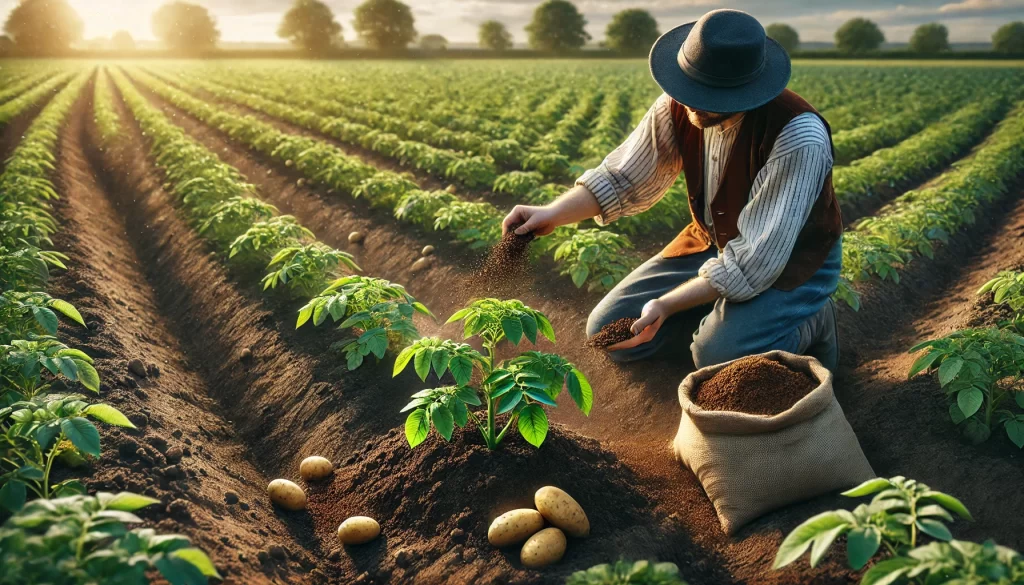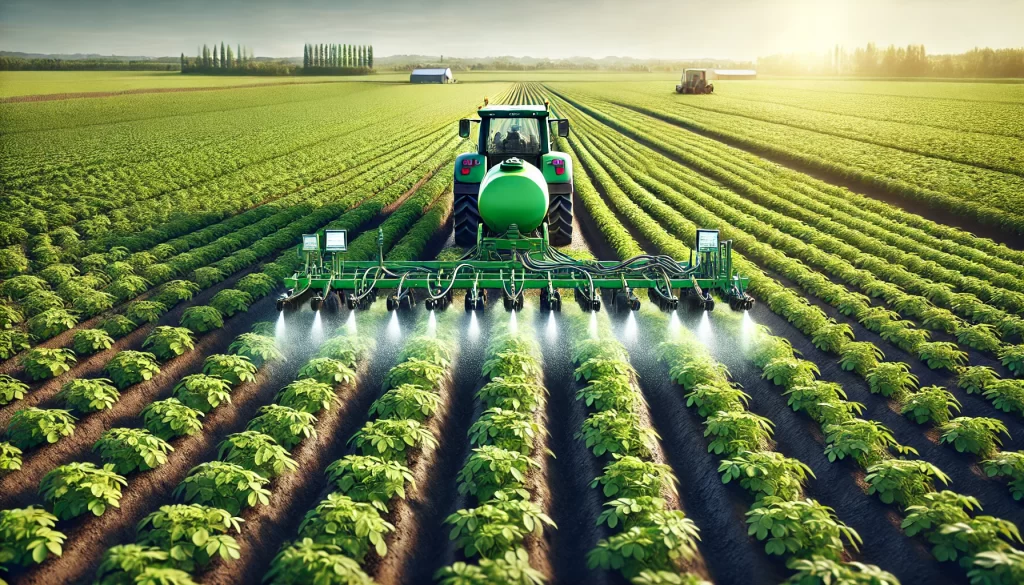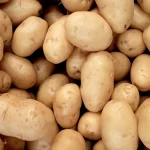Importance of Nutrition in Potato Cultivation
Proper nutrition is essential for achieving optimal yield in potato cultivation. This crop is nutrient-demanding due to its rapid growth and the need to form high-quality tubers. Proper fertilization management ensures not only high production but also better quality tubers, with a lower incidence of diseases and defects.

Nutritional Requirements of Potatoes
Essential Nutrients
Potatoes require a series of essential nutrients for their development, which are divided into macronutrients and micronutrients:
- Macronutrients:
- Nitrogen (N): Essential for vegetative growth. Influences the formation of leaves and stems.
- Phosphorus (P): Promotes root and tuber development and is essential in the early stages of growth.
- Potassium (K): Improves disease resistance, tuber quality, and water-use efficiency.
- Calcium (Ca): Important for cellular integrity and the development of tuber skin.
- Magnesium (Mg): Participates in photosynthesis and chlorophyll formation.
- Sulfur (S): Necessary for protein and enzyme synthesis.
- Micronutrients:
- Boron (B): Important for cell division and the formation of cell walls.
- Zinc (Zn): Influences the production of auxins, key plant hormones for growth.
- Iron (Fe), Manganese (Mn), Copper (Cu), and Molybdenum (Mo): Although needed in small quantities, they are critical for various metabolic functions.
Growth Stages and Nutritional Needs
The demand for nutrients varies throughout the potato growth cycle:
- Emergence: Low needs, focused on nitrogen to support initial growth.
- Vegetative Development: Increased demand for nitrogen and potassium, crucial for biomass formation.
- Tuber Formation: Phosphorus and potassium are essential at this stage for the development of quality tubers.
- Maturation: Nutrient needs decrease, but it is important to maintain potassium supply for disease resistance.

Soil Analysis and Nutrient Diagnosis
Importance of Soil Analysis
Soil analysis is the first step toward efficient fertilization. This process allows for understanding the content of available nutrients and adjusting fertilizer applications according to the specific needs of the crop.
Diagnostic Methods
- Soil Analysis: It is recommended to perform before planting to adjust the fertilization plan. It involves evaluating macronutrients, micronutrients, pH, and organic matter.
- Foliar Analysis: Complements soil analysis and allows for correcting deficiencies during the crop cycle.
- Visual Indicators: Observation of deficiency symptoms in plants, such as chlorosis or necrosis, which may indicate the lack of a specific nutrient.

Fertilization Strategies for Potato Cultivation
Base Fertilization
Base fertilization, also known as basal dressing, is crucial to provide the necessary nutrients from the start of the crop. It generally includes the application of:
- Phosphorus (P) and Potassium (K): In doses adjusted according to soil analysis. These nutrients are not very mobile in the soil and should be available to young roots.
- Nitrogen (N): Applied in a smaller proportion at planting to avoid excessive foliage growth.
Top Dressing
Top dressing is a common practice in potato cultivation and is done during the vegetative cycle. It focuses on:
- Nitrogen (N): Applied at one or more stages during vegetative growth, usually at the beginning of tuber formation, to stimulate biomass development and ensure good yield.
- Potassium (K): Reinforced with additional applications if high yields are expected or if soil analysis shows deficiencies.
Foliar Fertilization
Foliar fertilization is a complementary technique that allows for correcting specific micronutrient deficiencies during the crop cycle. It is commonly used:
- Zinc (Zn) and Boron (B): Applied in the early stages of development and during tuber formation.
- Iron (Fe) and Magnesium (Mg): In areas with deficiencies or where soil pH prevents the availability of these nutrients.
Organic Fertilization Management in Potatoes

Use of Organic Matter
The use of organic fertilizers, such as compost or manure, is highly beneficial for improving soil structure, increasing water retention, and providing nutrients gradually. It is important to consider:
- Composting: Well-decomposed compost is preferable to avoid nitrogen competition that can occur with fresh materials.
- Manure Application: It should be well-distributed and preferably applied before planting to allow for decomposition.
Green Manure
Green manures, such as legumes and oats, can be sown before potato cultivation to improve soil fertility and provide nitrogen naturally.
Fertilization Adjustments According to Climate and Soil Type
Adaptation to Different Climatic Conditions
Fertilization management should be adjusted according to the climatic conditions of the region:
- Cold Zones: Increase phosphorus and potassium to strengthen plants against low-temperature stress.
- Humid Zones: Greater emphasis on potassium to reduce the risk of fungal diseases.
Considerations According to Soil Type
- Sandy Soils: Require more frequent nutrient applications due to their low water and nutrient retention capacity.
- Clay Soils: Better nutrient retention but may need pH adjustments and careful irrigation management to avoid compaction.
Tools and Technologies for Potato Fertilization
Precision Fertilization Technology
The implementation of precision agriculture technologies allows for more efficient fertilizer application:
- Soil Sensors: Monitor moisture and nutrients in real-time, allowing for immediate adjustments.
- Drones and GPS: Help map the field and apply fertilizers variably according to the needs of each area.

Use of Controlled-Release Fertilizers
Controlled-release fertilizers are a modern option to improve nutrient use efficiency, reducing leaching, and ensuring a steady release of nutrients throughout the crop cycle.
 AgronoBlog – Agriculture Blog
AgronoBlog – Agriculture Blog 


